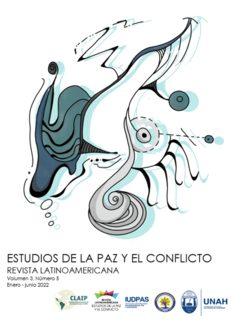Art and symbolism in the triple gender resistance in the armed conflict in Colombia
DOI:
https://doi.org/10.5377/rlpc.v3i5.12753Keywords:
Armed conflict, violence, gender, resistance, art, symbolismAbstract
The article develops a theoretical framework to understand the relevance of art and symbolism for women as tools and strategies to resist the continuum of gender violence and its exacerbation in the armed conflict. Within the subordinate position that women occupy in society, the feminist / women's movement in Colombia has not only worked for peace, but has had to resist the gender impacts of war and to denounce the continuum of violence against them in the private, public and armed conflict spheres, having to develop what I have called a triple gender resistance to cultural, structural and direct violence respectively. The case of Colombia has been studied, first of all describing the reality of women in the country in terms of the axes of decision-making, economic and physical autonomy, and then describing their organization in response to war and gender violence, as well as their use of symbolic language and the arts as means of collective healing, empowerment and political agency.
Downloads
1262
HTLM (Español (España)) 264
XLM (Español (España)) 260
EPUB (Español (España)) 125
Downloads
Published
How to Cite
Issue
Section
License
Copyright (c) 2021 Revista Latinoamericana Estudios de la Paz y el Conflicto

This work is licensed under a Creative Commons Attribution 4.0 International License.
The journal's contents are published under a Creative Commons Attribution 4.0 license (CC BY 4.0). This license allows third parties to share (copy and redistribute the material in any medium or format) and adapt (remix, transform and create from the material for any purpose, including commercial), as long as the authorship and first publication in this journal (Revista Latinoamericana Estudios de la Paz y el Conflicto, Universidad Nacional Autónoma de Honduras - Consejo Latinoamericano de Investigación para la Paz, DOI of the work) is acknowledged, a link to the license is provided and it is indicated if changes have been made to the original. The terms of the license are available online at http://creativecommons.org.




